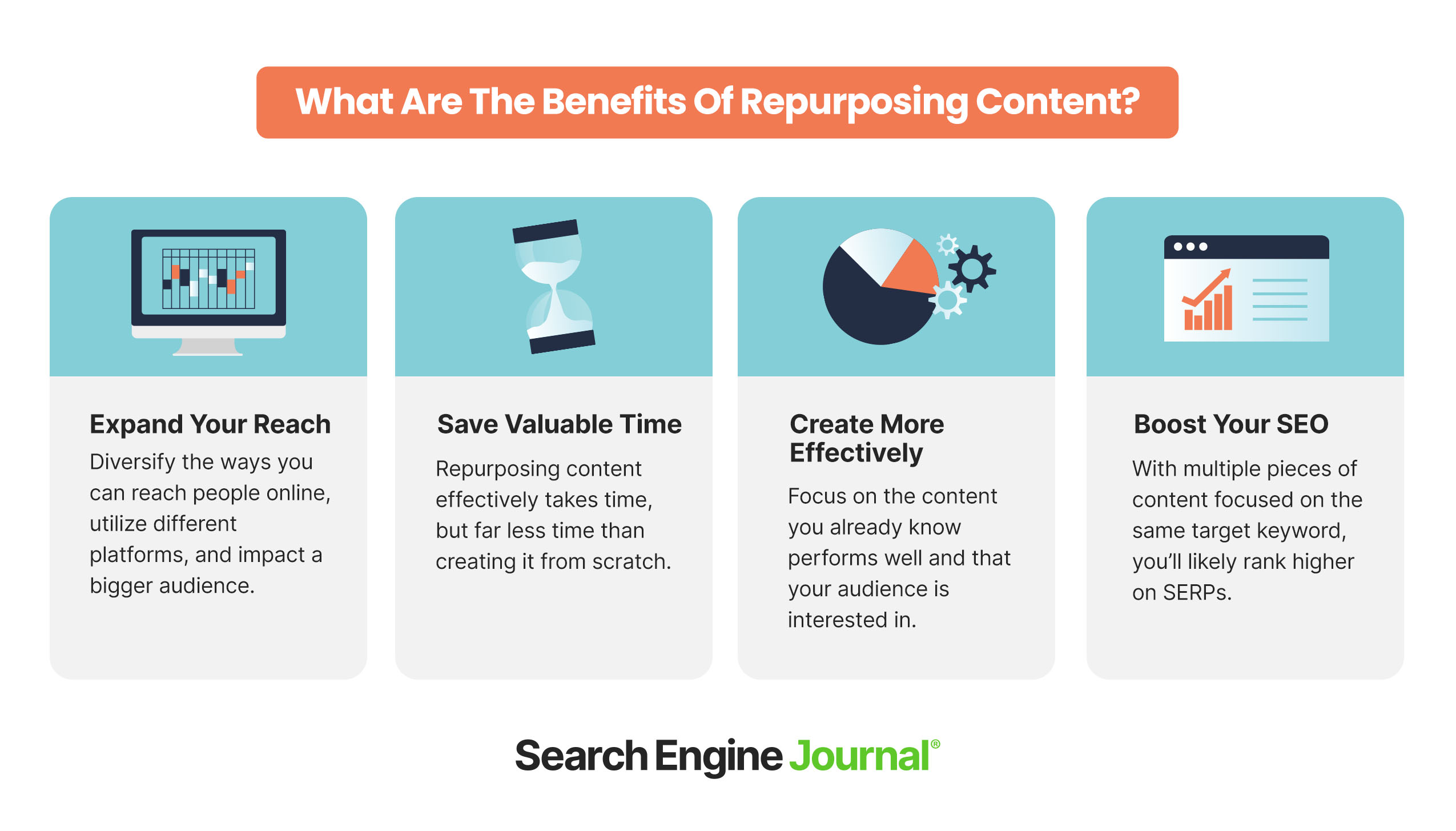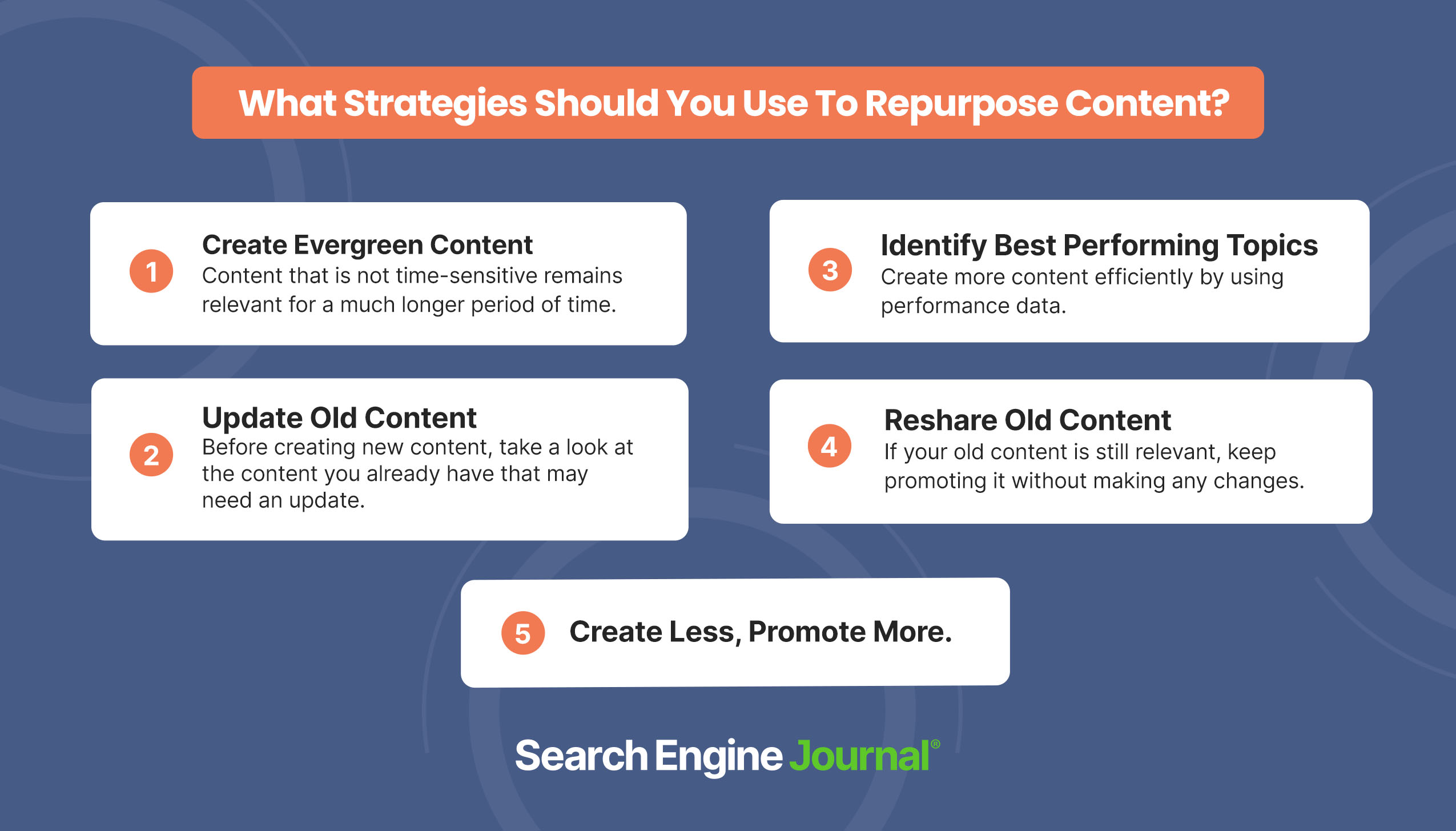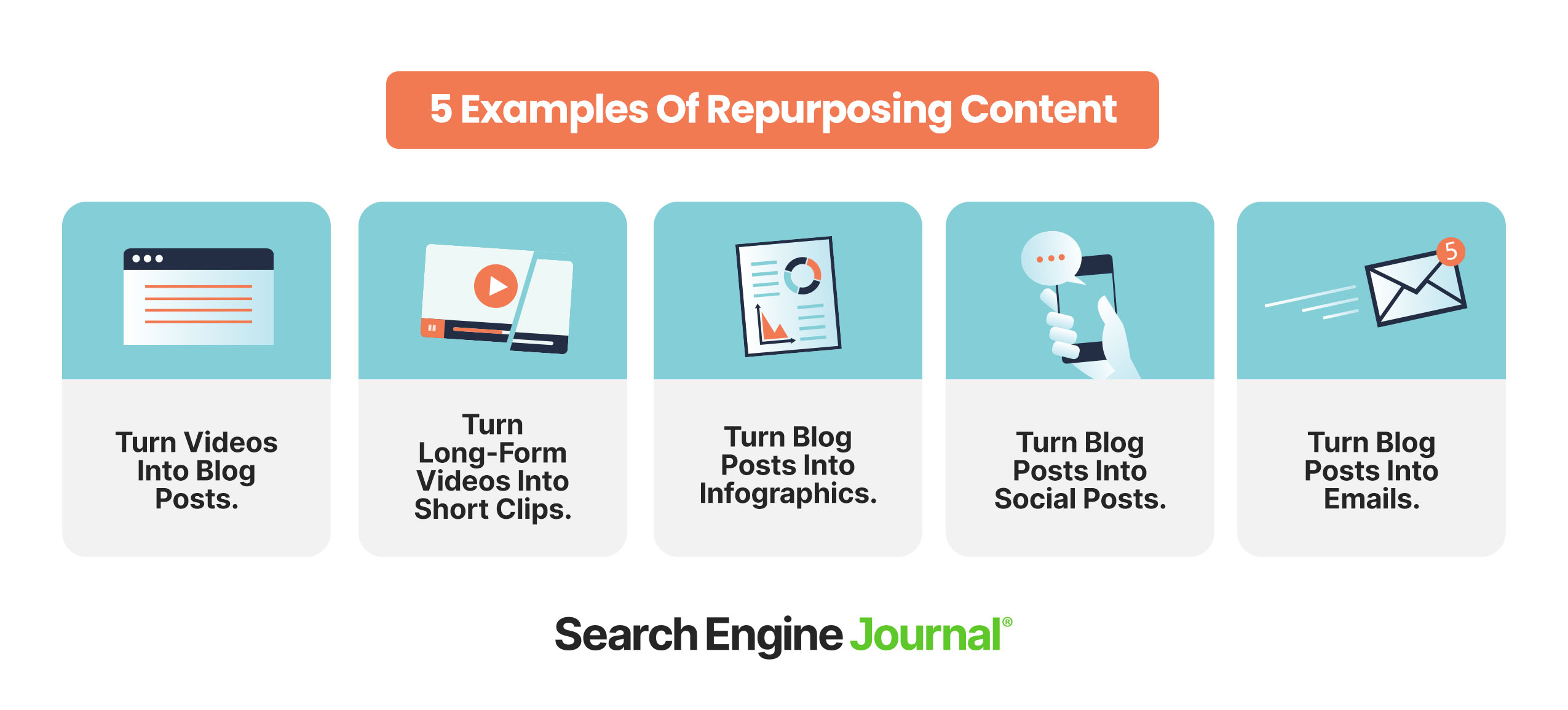Creating content is not easy; it takes work and a lot of time.
And if you’re not a full-time creator, you probably don’t have the time and resources to focus all your energy on content creation.
So, if you haven’t experimented with repurposing content yet, now is the best time to start!
And even if you have dabbled in content repurposing, here are some valuable tips on how to get the most out of your hard work.
What Are The Benefits Of Repurposing Content?

Repurposing content is essentially the practice of getting the most out of a single piece of content. There are so many different ways to make this work, and we’ll explore them further in this post.
But first, here are the biggest reasons why you should get into the habit of repurposing content.
Expand Your Reach
By repurposing content, you also diversify the ways you can reach people online. It allows you to be on different platforms, even if you don’t have a big team to support you.
And therefore, it expands your reach and allows your content to impact a bigger audience.
Save Time
Even though you’ll be creating lots of different pieces of content, you won’t be doubling up on your time doing so.
Repurposing content effectively takes time, but nowhere close to creating something from scratch.
Create Effectively
Using a content repurposing strategy, you’ll focus on the content you already know performs well and that your audience is interested in.
You’ll base your content creation strategy on real data and simply create more of what you already know works.
This eliminates the guesswork around creating engaging content and frees up your time to do other tasks, such as experimenting with other types of content!
Repurposing Helps With SEO
Repurposing content can also potentially give you an SEO boost, as you’ll likely have multiple pieces of content focused on the same target keyword.
What Strategies Should You Use To Repurpose Content?

Evergreen Content
Evergreen content is any piece of content that is not time-sensitive, so it remains relevant for a much longer period of time.
This kind of content is not specific to a time of the year or any specific news; it can be viewed or consumed at any time and still make sense.
For example, a post about a new release of a software product is not evergreen because as soon as another version is released, it loses its relevancy.
So, go through your library of content and identify the evergreen pieces you have that can be repurposed today.
If you don’t have the time to create new pieces right now, your evergreen content will be a lifesaver.
Updating Old Content
If there’s one thing we can be sure of, it’s that things are changing all the time.
Before you start creating new content, take a look at the content you already have that may need an update.
You have two options here, and you should decide what to do based on what makes the most sense for you.
- Recreate that piece of content and republish it – it may not need a lot of tweaks, just an update based on what is relevant right now.
- Simply update the original piece – if there is, for example, a blog post that is still doing really well on search engines, then don’t republish it. Instead, update the content keeping the same URL and SEO values, and promote it again.
Sharing Old Content
If your old content is still relevant, you can definitely keep promoting it without making any changes.
The examples below of repurposing content can totally be used for old content.
Identify Best Performing Topics
If you’ve been creating content for a while, you have valuable data to help you with this strategy.
Take a look at past posts and videos that have done better than average, and see if you can find commonalities among them.
This will help you identify the topics your audience is most interested in, so you can create more content efficiently.
Create Less, Promote More
This is a great summary of what repurposing content means; We want to spend less time creating and more time promoting.
Content creation is a ton of work, so make sure you get the most out of your content with these five examples below!
5 Examples Of Repurposing Content

1. Turning Videos Into Blog Posts
Long-form videos are the most effective piece of content to be repurposed. Not only that, but video content is one of the most effective types of content.
A long-form video can easily be turned into a blog post in a few easy steps:
- Transcribe your video.
- Do keyword research on the topic.
- Format the transcription – this part is really important. You don’t want to simply copy/paste the transcription and post it as a blog. Transcriptions always have some mistakes, and the way we talk doesn’t always work in a written format. Make sure you rewrite any part that reads weirdly, and you can also add more to the blog as you’re doing that.
- Identify places where you can fit keywords naturally. And again, feel free to add more to the blog than you had on the video.
- Add headings, lists, and images – the same blog posting rules apply here, make sure it’s easy to read.
And there you go: your video just became an SEO-optimized blog post in a fraction of the time.
2. Turning Long-form Videos Into Short Clips
Your long video can become several short clips that you can turn into YouTube Shorts, Reels, TikToks, Stories, and maybe even paid ads.
You should always resize them so they’re optimized for each platform.
3. Turning Blog Posts Into Infographics
Now that you have your brand new blog post, why not turn it into an infographic?
Infographics are great for people who prefer visual learning, and it’s an effective way to summarize your post. You can add that to the blog and also turn it into social media posts.
4. Turning Blog Posts Into Social Posts
Now we can break it up even more and turn the blog post into multiple pieces of social content. These can be:
- How to’s.
- “Top X” listicles.
- Quotes.
- Infographics.
It’s a great opportunity to expand on a particular topic and make that the main focus.
This way, you create pieces of content that are different enough from one another but still repurposed from this one main video you created.
5. Turning Blog Posts Into Emails
The main takeaways from your blog post can also become interesting emails. Depending on how much information you shared in the post, you may be able to pull two or three emails from the post.
Another example using this very article –here are some email topics that could come from this:
- Email 1 – Why you should start repurposing content.
- Email 2 – Strategies you can use to repurpose content.
- Email 3 – Five examples of content repurposing.
How Can I Make Repurposed Content More Engaging?
There are different ways you can make your content more engaging, but rule number one of repurposing content is that you should never simply copy and paste.
Make sure that each new piece of content you create is optimized for the platform you’ll be using it on.
Some pieces of content will need more tweaking than others; at other times, you might barely have to change anything for it to work!
It’s 100% worth it to take the time to make the necessary changes – I promise, it will still save you a ton of time.
More resources:
- How To Repurpose Long-Form Content Into Supplementary Content
- Content Repurposing for Travel Brands: A Complete Guide
- Perfectly Optimized Content From Start To Finish
Featured Image: Ico Maker/Shutterstock





